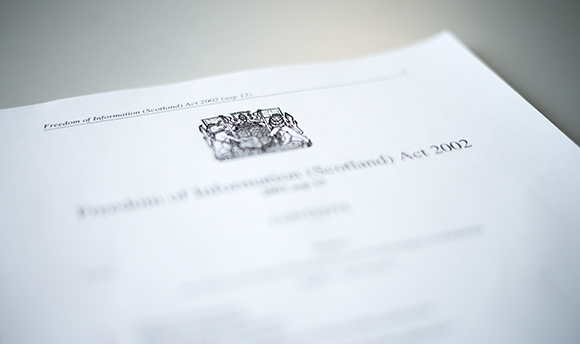Policy on Inclusive Learning and Teaching Materials
1. Introduction
This policy outlines the principles and practical steps that the University has committed to take in pursuit of the University’s overarching goals and drive toward an excellent student experience. These principles and steps aim to further develop the study environment in a way that enables students to optimise their academic potential and derive the most benefit from their programme of study and university experience.
The purpose of this policy is to support consistency in practice across the University in terms of the anticipation, identification and promotion of good practice in the preparation and presentation of learning and teaching materials. We aim to mainstream inclusive practices which benefit disabled students but also all students irrespective of background and protected characteristics.
The policy aids the systematic consideration of the effects of teaching, learning and assessment practice at the point of planning, implementation and evaluation to ensure that learning and teaching is inclusive of all students.
This policy aims at maximising the inclusivity of learning and teaching, so that all our students have equal access to their course of study and its learning materials. This is consistent with the aspiration set out in the Student Experience Strategy that we will be committed to social justice, recognising equality and diversity in all that we do.
The principles of this policy are in line with our duty to make reasonable adjustments under the Equality Act 2010. This duty requires education providers to take positive steps to ensure that students with a disability can fully participate in their education and enjoy the benefits, facilities and services which education providers offer.
This approach is embedded in the United Kingdom Professional Standards Framework for teaching and supporting learning in higher education as well the QAA Enhancement Themes.
This policy supports mainstreaming as a principle aimed at embedding inclusive practices and policies within higher education with the goal of achieving and standardising equality and diversity. Mainstreaming can help to eradicate everyday inequalities, normalise discussion surrounding protected characteristics and improve student and staff experience by fostering a culture of inclusion and belonging. This policy supports the introduction of mainstreaming to improve inclusion in learning and teaching through the following measures:
2.1. Adopting certain types of academic support (reasonable adjustments) frequently recommended by the Disability Service as standard practices, which can benefit all students. The following measures will be seen as standard practice in all courses:
- Students being allowed to audio record lectures for personal use as set out in the IT policy. Students will need to inform the lecturer that they are recording, and the recording will be strictly for personal use.
- Students being allowed to leave the classroom without permission
- Lecture notes/slides should as far as possible be provided 24 hours in advance to all students
- All recordings to use captions/subtitles
2.2. Reasonable adjustments used to remove barriers for disabled students as much as is practically possible in order to ensure they can access all learning and teaching materials.
2.3. All materials produced by the University in support of its learning and teaching activities should be following accessibility guidelines to be inclusive of as broad a range of students as possible.
2.4. The mainstreaming of the preparation, presentation and evaluation of teaching and learning activities will be continually reviewed and developed to ensure that the need for reasonable adjustments for individual students will be minimised.
This policy mainstreams good practices across the University in relation to the anticipation, preparation, presentation and evaluation of learning and teaching materials. This policy applies to all students of the University and to all QMU staff who teach and support students.
This policy does not apply to students who are studying with collaborative partner organisations, whether within the UK or overseas. It is recognised that collaborative partners may have access to different levels of infrastructure to support learning and teaching, depending on the nature of their agreement, and may employ different methods of communication and sharing of learning materials. Partners in different countries may also be subject to different legislation.
Through the process of working together and sharing good practice from QMU, Collaborative Academic Leads will encourage partners to adopt inclusive learning approaches that will be effective in their context.
4.1. The official forms of communication are the University’s Virtual Learning Environment (VLE) and email systems and these should be the primary method of communication.
4.2. When using the announcement tool in VLE, staff should ensure an email is sent to individual students by ticking the appropriate box. Information will only be sent to the students’ QMU email addresses.
4.3. This may be supplemented by other forms of communication (such as plasma screens, lecture announcements etc.) as available and appropriate e.g. BSL users may use the Scottish Government’s nationally funded BSL online interpreting video relay service called ‘contact SCOTLAND-BSL’ (See QMU’s BSL Action Plan for further details).
5.1. Module descriptors should be made available at least two weeks before the start of the module.
5.2. Module descriptors should be communicated in course materials and on the Virtual Learning Environment.
5.3. Further course details including module guides will be provided at the start of the module on the Virtual Learning Environments.
6.1. Reading lists, focusing on the core texts only, including book or journal details, should be made available at least four weeks before the start of the module. For all items, book chapters and relevant page numbers should be indicated. Additional reading may be recommended nearer to the start date of the module and during the module.
6.2. Reading lists should indicate priority and/or relevance. The key purpose is so that students can prioritise their own reading.
6.3. There may still be a need to provide some specific support tailored to individual visually impaired students, identified by the Disability Advisers. In these cases, the Academic Disabled Student Coordinators will work with relevant teaching staff, the liaison librarian and the Disability Adviser to identify and prioritise texts that require conversion to an alternative format.
6.4. Reading lists should be supplied by module co-ordinators to the Liaison Librarian a minimum of eight weeks before the module is due to begin, with an indication of expected use and demand of the resource. This will ensure the Learning Resource Centre has sufficient time to identify, purchase and ensure core materials are available in appropriate formats.
6.5. In order to support the principle of inclusive learning and teaching materials, and to maximise accessibility, the Learning Services will normally include the purchase of electronic versions of reading list items.
6.6. It should be clearly indicated which of those readings are key to the module or particularly relevant to a session or theme within the module. It is not necessary for the whole reading list to be ordered. Neither is it expected that students should read only from the reading list provided; they will be expected, through their own research, to identify further readings.
6.7. In some subjects, the compilation of a reading list may be central to the assessment task and therefore no set reading list is provided. Where this is the case, it should be communicated clearly to students as part of the module information.
7.1. Lecture outlines or presentation slides, such as PowerPoint slides, for lectures/seminars should be made available to students at least 24 hours in advance of the class, preferably on the appropriate area in the virtual learning environment, for all students to access as required.
7.2. Where the virtual learning environment is not used, students must be informed of how to access the materials. Teaching staff will not be expected to produce presentation slides if slides are not appropriate for the content of the session. In these cases, the lecturer, tutor or module co-ordinator will provide an outline of the session 24 hours in advance of the session. This may take the form of a bullet-pointed list of the key themes/content of the lecture/class: it is not required that detailed notes are provided.
7.3 Judgement will need to be exercised in such cases where confidential or ‘spoiler’ information is contained within materials so as not to compromise confidentiality or impinge on the pedagogical experience. In such cases students should be informed of the presence of such information and may only be provided with partial presentation slides in advance of the class; the full materials to be made available following the class.
7.4 Students should be notified of changes to modules/classes as soon as possible.
8.1. All document structures should be kept simple. Screen readers (used by blind or visually impaired people) work best with well-structured documents.
8.2. Screen reading software reads across a page from left to right and cannot distinguish columns, so use of columns should be avoided.
8.3. Use a sans serif font such as, Arial, Verdana or Calibri.
8.4. Use a minimum size 12-point font – the font should be large enough to be read easily by most people.
8.5. Write in plain English, avoiding jargon except for technical words.
8.6. Text should be left aligned. There should be enough white space to break up the text. This can be done by adjusting line and paragraph spacing settings.
8.7. Use bullets and numbering.
8.8. All pages should be numbered.
8.9. Use the built-in header styles in Microsoft Word – this then enables users to use the navigation pane to move around the document.
8.10. Make use of diagrams, flow charts, screen-shots, summary boxes and callouts to provide additional visual explanation. Consistently used pictograms can draw attention to important procedures or hazards.
8.11. When using tables, the header row should be specified and repeated across different pages.
8.12. Add ‘alt-text’ to tables and images which describes the appearance and/or function of the image or table.
8.13. Images should be used in such a way as not to obscure text.
8.14. There should be sufficient contrast between the text and the background.
8.15. Where possible, use non-glossy paper, off-white is preferred for printed documents.
8.16. Use hyperlinks so that readers can easily move to information in the same document, a different document or a web page. When using links ensure text is concise and meaningful. Do not use text such as “link”, “here” or full URL’s as this cannot be read easily by a screen reader.
Alt-text (or alt tags) refers to text that is associated with an image that serves the same purpose and conveys the same essential information as the image itself. Alt-text is used to help people using a screen reader to understand the content of images and other non-text content in a document.
9.1. Approved templates, or templates adhering to similar principles, should be used in all cases.
9.2. The layout should be simple and clear.
9.3. Where slides contain tables and diagrams, ‘alt text’ should be embedded to describe the table or diagram.
9.4. If possible, the presentation should be checked and modified as necessary using the accessibility checker.
9.5. ‘Alt-text’ and captions should always be used for any images.
9.6. Images should not normally overlap or interfere with text.
9.7. Keep slide transitions simple to avoid unnecessary distractions.
Accessibility checkers are available in Microsoft Word 2010 onwards – with the mouse click on File tab, Info, Prepare for sharing.
10.1. All video materials should contain subtitles or alternatively a suitable transcript of the content should be available for deaf or hard of hearing students. More guidance regarding Captioning can be found in QMU’s Captioning Policy.
10.2. All video materials should ideally have descriptive voice-over options for blind or visually impaired students.
10.3. File sizes should be made as small as possible.
11.1. Teaching staff may access advice and guidance on inclusive teaching from the Disability Service and the LEAD Centre (Learning, Enhancement and Academic Development)
11.2. Training on understanding reasonable adjustments and their implementation should be made available to all teaching and support staff. Human Resources is to ensure the provision of that.
11.3. Disability Advisers to provide any additional advice on accessibility and inclusivity to teaching staff.
11.4. All documents for (re-)validation will comply with this Policy.
11.5. (Re-)validation Panels to consider evidence of inclusive teaching and assessment strategies to support students with range of abilities.
11.6. Assistive software on the QMU network to be promoted for the use by all students.
12.1. Students should normally be permitted to audio record lectures, tutorials and supervision sessions using their own equipment for their own personal learning.
12.2. The recording is only to be used by the individual student for the purposes of personal study (it shall be a disciplinary offence to use the material for any other purpose, or to distribute the material).
12.3. Video recording shall not be permitted without the explicit permission of the member of staff involved and other participants.
12.4. All Intellectual Property Rights in the recording remain with the University and the lecturer.
12.5. The recording is done in an unobtrusive manner by the student using their own equipment.
12.6. The recording is destroyed once its purpose has been met (this will always be before the student leaves the University and shall normally be by the end of the exam diet to which the module relates). The student will not share the recording or disseminate the recording
12.7. Teaching staff have the right to insist that recording stops in certain circumstances (for example to protect confidentiality where sensitive or personal information is being discussed).
12.8. Students agree to these terms and conditions as part of the contract between the University and its students and consent to it on matriculation.
13.1. All staff involved in teaching or supporting student learning should ensure that microphones are worn and used in the lecture theatres (QMU rooms 2156, 3148, 3168 and 3169).
13.2. Where radio microphones are made available in teaching rooms these should be worn and used by all teaching staff. Table-top microphones are not always sufficient on their own, particularly when lecturers walk around whilst talking.
13.3. Maintenance of the microphones is the responsibility of the Media Services.
The Inclusive Learning and Teaching Policy will be supported by advice from the Disability Service. The implementation of the policy is expected to take time. The adoption of the policy should signal that new materials will be produced to adhere to the principles and guidelines outlined here. Existing materials should be adapted in due course. Periodic updates on implementation will come to future meetings of the Student Experience Committee.


